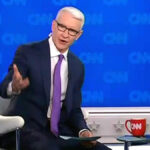
HORIST: Is NFL football being thrown for a loss?
Today, American football reigns supreme as the biggest of the big sports, at least in terms of money. It is unimaginable to think that football can fall out of public favor. Or is it? If the NFL team owners appear to be sweating a bit these days, they may see the problems ahead.
NFL football is currently about an annual $10 billion industry and NFL Commissioner Roger Goodell has announced plans to make it a $25 billion dollar industry by 2027. That is not only an enormous ambition, but runs contrary to current trend lines.
The first problem is growing fan angst over the increasingly intolerable ticket prices. The annual average NFL ticket price is approximately $100. That means about $2000 for an average Cub Scout pack to see a game – and those are not the best seats in the stadium and it does not include some of the most expensive refreshments in America. Ticket prices for VIP seating and boxes can soar into the thousands of dollars. Enjoying a day at the stadium is no longer a middle-class entertainment.
Owners say the high ticket prices are necessary because of the high pay provided the players. That is nonsense. Would Detroit Lions quarterback Matthew Stafford not play for a lot less than his $52 million earnings or Carolina Panther quarterback Cam Newton for less than his $35 million, including $11 million in endorsements? Hell, he ought to be paying the league for the privilege of earning all that endorsement income.
The backlash is not just against owner profits and player salaries, but the NFL, itself. Roger Goodell rakes in between $35 and $50 million dollars annually in salary and bonuses. In the past eight years, he has taken home an estimated $200 million – and there are likely millions more in other benefits. For obvious reasons, Goodell’s interest in not to grow the sport, but to grow the revenues.
When viewed against the billions of dollars being pocketed by the owners and the tens of millions that go to individual players a lot of fans are getting increasingly rankled – especially those who can no longer afford to attend a game.
It is no small irony that a sport in which black athletes represent 70 percent of the players on the field has ticket prices that are out of range of the vast majority of black fans. This may explain why the Detroit Lions, playing in a majority black city, have the player with the highest earnings in the NFL and one of the lowest home-game attendance figures. Teams may operate out of a city with pretenses of local pride, but they are not community-based anymore. Location is just a place to play.
While there have been mini ticket price rebellions, they have not seriously impacted on the profession’s pocketbook – at least not yet. Currently, the teams are filling the stadiums. All but two teams in the NFL report an average attendance in excess of 90 percent. But, this is slipping a bit.
While 60,000 to 90,000 people in the stadiums give the sport drama and excitement, they are not the biggest revenue generators for the owners and NFL officials. There are billions upon billions of dollars in revenues from deals with broadcast television, cable television, Internet streaming, smartphone apps and radio. There is additional billion from sponsor deals, such as the $100 million from Microsoft to have their appliances used exclusively on the sideline. Billions more from the sale of intellectual property. Losses in viewership can impact negatively on all of these revenue streams.
The owners also worry about their teams’ market values. According to Forbes Magazine, you can pick up the Buffalo Bills for a paltry $1.6 billion while the Dallas Cowboys will cost you close to $5 billion. In these salad years, those values have been going up … up … and up. In the past five years, they have more than doubled for all but two teams. This is not a trend that will continue if ticket sales and viewership wane.
There is also fan and general public anger over the taxpayer subsidies provided to this very successful billion dollar industry. President Trump hit a hot-button issue when he questioned all the tax breaks and subsidies provided to the NFL at the federal, state and local levels. In view of the enormous profits and salaries, is there any justification for gratuitously piling on taxpayer money that could be used for much more serious matters? Can an owner build a stadium without a subsidy? Most say “no,” but if I recall correctly, Joe Robbie did just that with the Dolphins’ stadium.
Another threat to the NFL is the safety issue. I call it gladiator syndrome. In ancient Rome, gladiators were willing to suffer serious injury and even death for the glory of playing the Coliseum. While they were not highly paid, they were subsidized to a very comfortable lifestyle in terms of housing, food and women. They were much like the superhero football players of today.
Football is a high-risk sport. Injuries are common and death is not unheard of. The issue of brain damage is in the fore of contemporary national debate. The NFL has only two options – ignore the injuries or change rules to make the sport safer. Some are actually calling for the NFL to convert to flag football where tackles are not allowed. Making the sport safer will undoubtedly result in a decline the fan base. So which is it, pay the player enough so they are willing to wreck their bodies and brains like the gladiators or drastically reform the sport?
In the long run, that may not be the NFL’s decision, but the result of parental action. Encouraging a youngster to take up tackle football is greatly diminished. Flag football is a growing sport among youngsters from preschool through high school. Many parents are guiding their kids to soccer as the preferred sport – or even the old standard of baseball.
While it is anecdotal, my own family is a good example. My youngest son, Alex, started out with Bumble Bee soccer. He later played basketball, baseball and flag football (as pictured above) – all without injury. As an all-around athletic young man, he went out for tackle football in high school. As a tall and slender guy, it was not a great option in retrospect. During his freshman pre-season practice he sustained one of those lifelong knee injuries that cause a problem now and then and are potentially degenerative.
The person most opposed to his playing tackle football was his grandfather, who had a notable football career at Duke University and was an avid spectator fan of the sport. He repeatedly said, “I never want to see my grandchildren play football.” We should have heeded his admonition.
When checking out high school sport injuries and fatalities, tackle football is at the top of the list. It leads in the most injuries, the most head injuries and the most deaths. But it happens before high school. Each year almost 400,000 children between 5 and 14 are treated for serious musculoskeletal injuries.
The parental response to the dangers of football means that fewer and fewer youngsters will be filling the professional football pipeline. The popularity of the sport is bound to ebb as a result of a shift in cultural perspectives.
While the perception of greed and the reality of serious injuries have reduced the popularity of football, there has been another contributor to the decline – partisan political controversy. The backlash is coming from two directions.
The first has been brewing for some time. With a nation closely divided on philosophic lines, the last thing any sport needs is to enter into that fray. Most people want their sports to be apolitical.
For some time now, ESPN been a partisan on the political playing field for reasons that seem to defy logic and self-interest. Making the situation even worse is that they picked the liberal side when polls suggest that most of their fans tend to be on the more conservative side.
Allowing rabid left-wing characters as former ESPN personality Keith Olbermann to interject strident political opinion into sports reporting was bound to get a reaction. Olbermann was not alone. Way back in 2014, ESPN reporter Michael Wilbon suggested the NFL pull the Super Bowl out of Arizona “in a heartbeat” if the governor signed legislation defending religious objection. ESPN found it necessary to at least slap the hand of Jemele Hill for her outrageous, hateful and inappropriate Twitter slams at President Trump. Firing her might have been more responsive. In an irrational and laughable curtsy to political correctness, the station actually pulled off an on-air Asian commentator because his name, Robert Lee, was the same as the Confederate General.
This obsessive injection of left-wing ideology into sports broadcasting has had its impact. ESPN’s favorable rating has taken a nosedive. In a memo to staffers, the network’s majordomo John Skipper wrote that “ESPN is not a political organization.” Of course, such a disclaimer would not have been necessary if ESPN had not drifted so far into political hot waters.
Then there is the Kaepernick controversy. In this case, the NFL mishandled what was a mistake by Kaepernick. There may have been a time to resolve the issue before it spread to an international brouhaha. But, it is what it is.
Kaepernick and the mostly black players who joined in made two serious mistakes in using disrespect for the National Anthem as the symbol of protest and the football field as the place. For most Americans, the Anthem, flag and Pledge of Allegiance are the cultural unifiers. Disrespecting them is disrespecting the nation and all it stands for – at least that is how most Americans feel. For most fans, sports is a diversion – a place of entertainment. It is also a workplace.
No matter how many times the Kaepernicks say it is only about racial police shooting, that is not what most of us see. And even that has become unclear as other activists say it is about racism in general. Once Trump chimed in, voicing what most Americans believe, it became an anti-Trump protest.
This is where the owners made their mistake. They tried to straddle issues in which the footing is too far apart. In this case they failed to establish proper conditions of employment – workplace rules. Rather, owners engaged in a lot of double talk, suggesting their players should stand for the Anthem but joining in on pre-Anthem protests. They talked about requiring players to stand and then chose to not make it a requirement. Some decided to keep the teams in the locker room until the Anthem was over. Sorry, but that is as disrespectful as kneeling, turning backs or raising the black power fist.
The only thing the Kaepernick protest launched was greater political division and a growing public rejection of football and for those who run it and those who play it. Greed, physical safety and misguided political correctness are posing a serious threat to the future of the sport. Abner Doubleday must be looking down with a smile.
Larry Horist is a conservative activist with an extensive background in public policy and political issues. Clients of his consulting firm have included such conservative icons as Steve Forbes and Milton Friedman, and he has served as a consultant to the White House under Presidents Nixon and Reagan. He has testified as an expert witness before numerous legislative bodies, including the U. S. Congress and lectured at Harvard University, Northwestern University, Florida Atlantic University, Knox College and Hope College. An award-winning debater, his insightful and sometimes controversial commentaries appear frequently on the editorial pages of newspapers across the nation. He can be reached at lph@thomasandjoyce.com.
























First, I said “libturds” not “libtards” so work on your basic reading skills. And yes I have all the valid…
Seth seems to live in his own reality of delusion. Might need to open the windows on his doublewide to…
But payback is a bitch Your crowd tried everything including assassination. How did that work out. Dunger.
Larry AOC could not do any worse than DJT is doing now. Also, AOC speaks with abetter English vocabulary selection…
This is what happens in a Country, a Business or a Corporation. Unless it is a sole proprietor Business or…